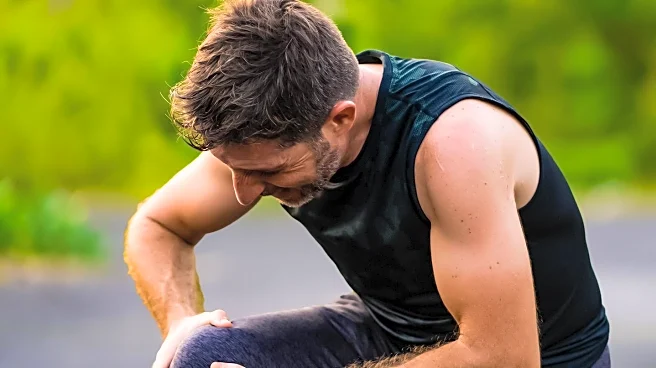What is the story about?
What's Happening?
A recent study published in The Lancet Rheumatology suggests that altering the angle of the foot while walking can significantly reduce knee pain associated with osteoarthritis. Conducted by researchers from the University of Utah, New York University, and Stanford University, the study involved 68 participants with early-stage medial compartment knee osteoarthritis. Participants were trained to adjust their foot progression angle by 5 to 10 degrees, either toe-in or toe-out, to reduce knee load. The intervention group reported a significant reduction in pain, comparable to the effects of pain medications, without pharmacological side effects. MRI scans also indicated less knee cartilage degeneration in the intervention group compared to the control group.
Why It's Important?
This study highlights a non-pharmacological approach to managing knee osteoarthritis, which affects approximately 33 million adults in the United States. The findings suggest that gait retraining could be a viable alternative to medication, offering pain relief without side effects. This could have significant implications for public health, potentially reducing healthcare costs associated with osteoarthritis treatment and improving the quality of life for millions of Americans. The approach may also slow the progression of the disease, offering a proactive method for managing symptoms.
What's Next?
Participants were encouraged to practice the new walking technique daily to ensure it became natural. The study's promising results may lead to further research and potentially influence clinical practices in managing osteoarthritis. Healthcare providers might consider incorporating gait retraining into treatment plans, and future studies could explore its effectiveness in other forms of arthritis or joint conditions.
Beyond the Headlines
The study underscores the importance of personalized interventions in healthcare, particularly for chronic conditions like osteoarthritis. It also raises questions about the role of biomechanics in disease management and the potential for non-invasive treatments to complement or replace traditional medication-based approaches.
AI Generated Content
Do you find this article useful?













